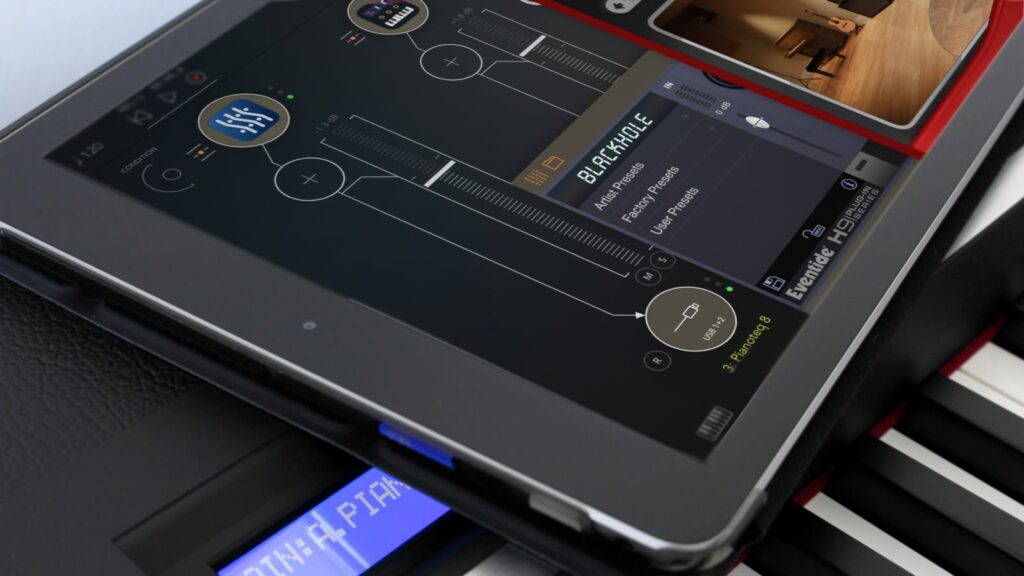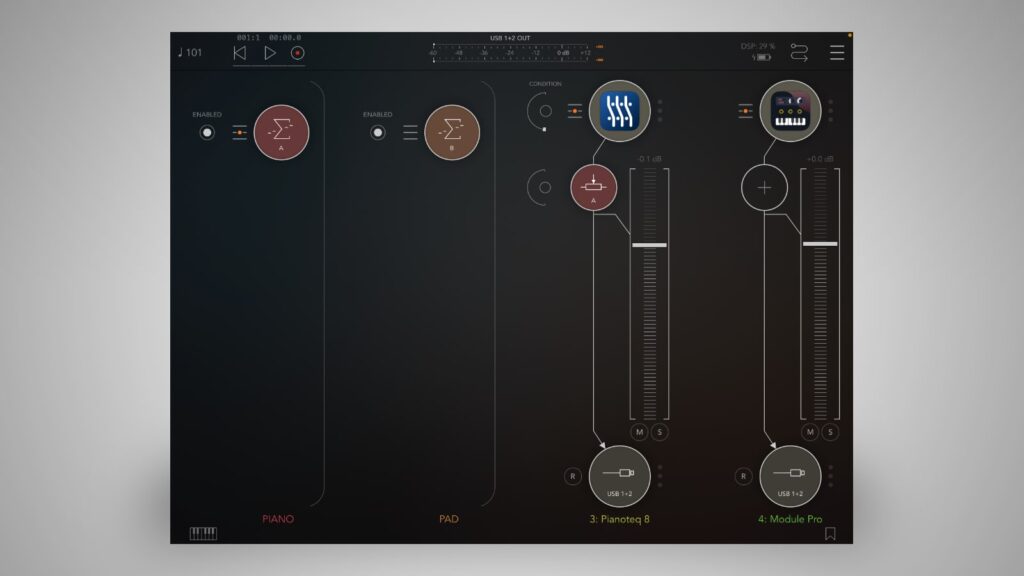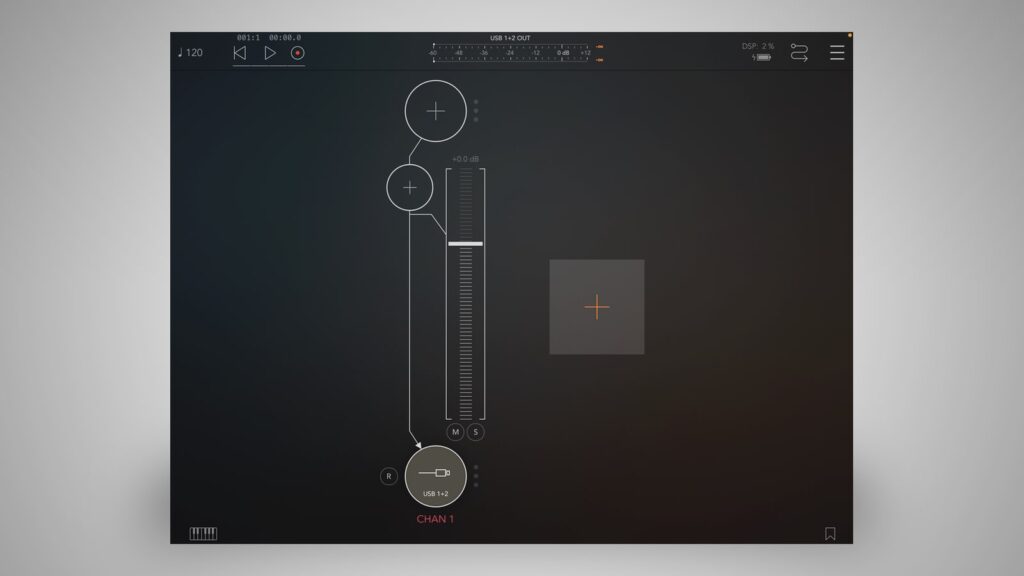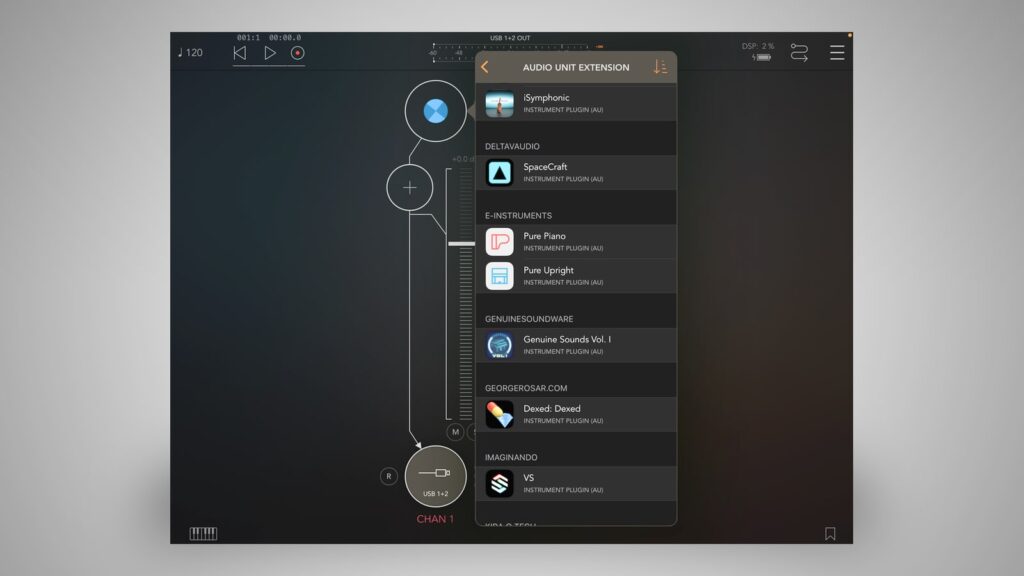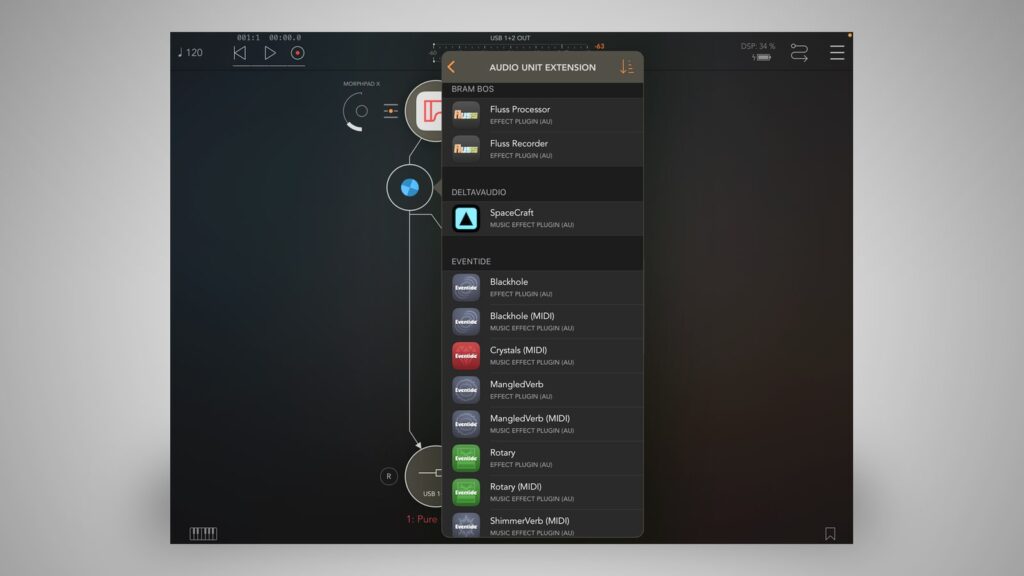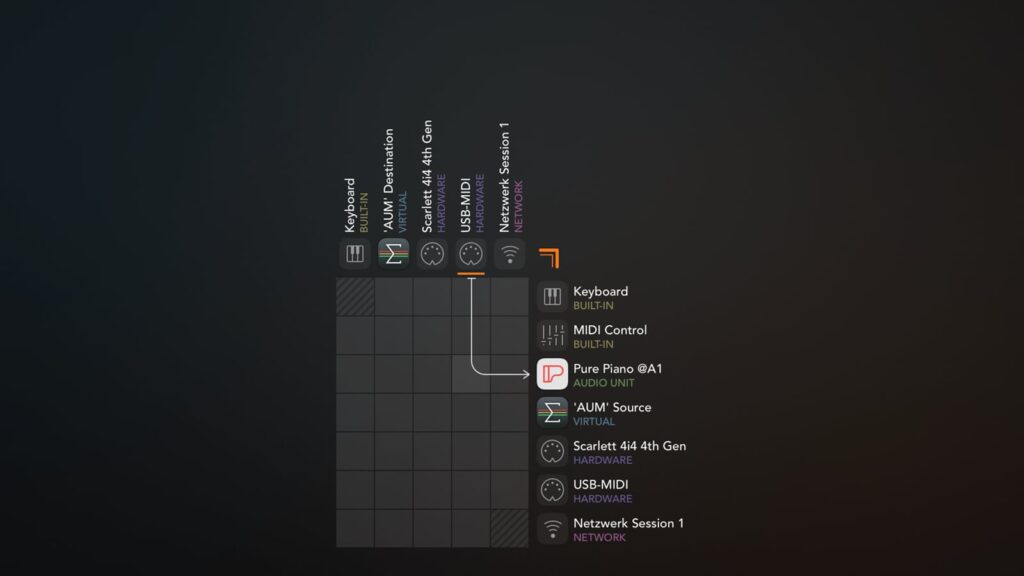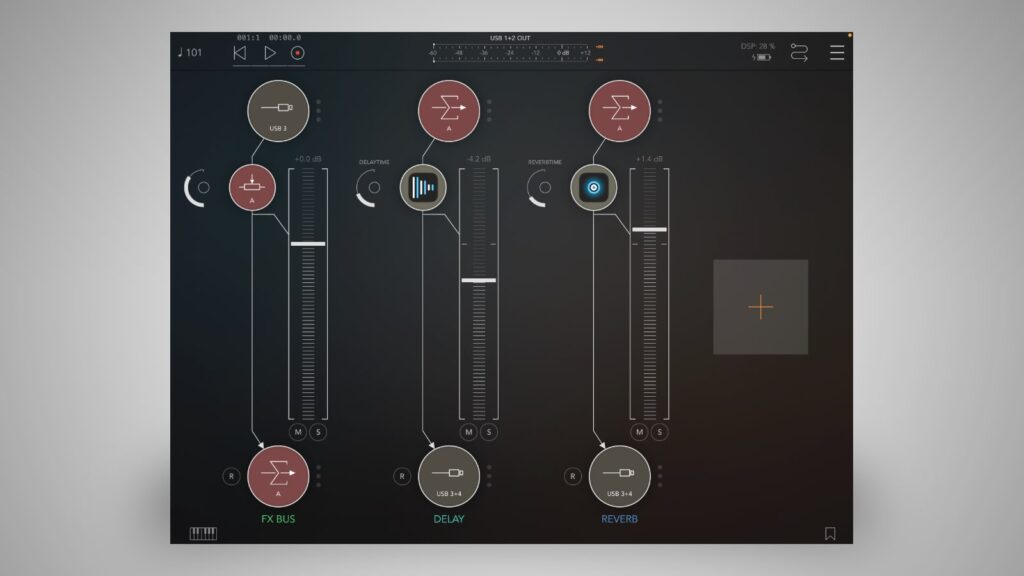Kymatica AUM in Practice
AUM offers exceptional flexibility and allows even complex audio and MIDI routing, with the bus system providing valuable support. Its ability to combine MIDI via MIDI buses is particularly useful, making AUM a versatile MIDI controller application.
When integrating AUM with other equipment, note that AUM does not sync to an external MIDI clock. Instead, AUM always functions as the master clock, sending timing information to apps and external devices as needed. You can configure which outputs should transmit the MIDI clock signal.
In summary, Kymatica AUM’s open routing architecture and bus system turn iOS devices into highly customizable audio workstations. With this system, you have all the flexibility you need for live performances!
Naturally, AUM is ideal for synchronizing multiple audio apps and external devices such as MIDI controllers, stage pianos, and synthesizers. You can also save settings and recall them quickly—just what you need for live performances.
However, as setups become more complex, additional hardware is required. Consequently, you have to plan for appropriately equipped audio and MIDI interfaces that connect to the iPad via the Camera Connection Kit or USB-C hubs. And don’t forget about a reliable power supply (USB-C power adapter).

